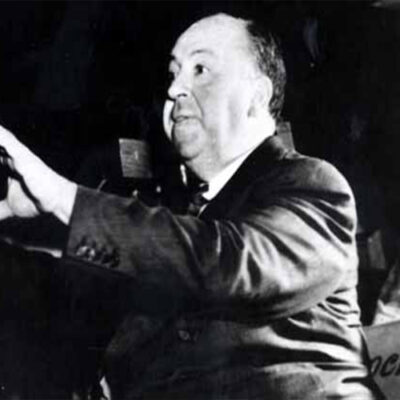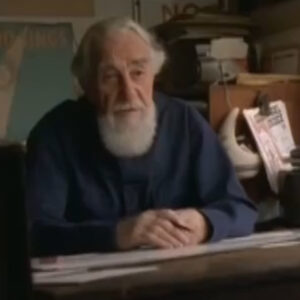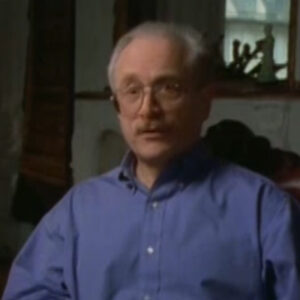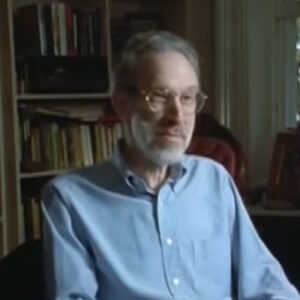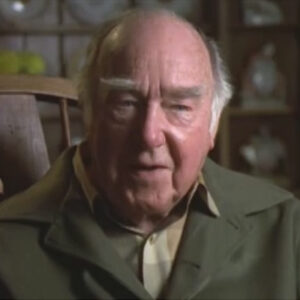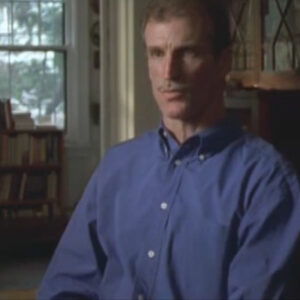Interviewer: Well, what do you think or what do you think, David, so far is that he lost so much?
Paula Cohen: Well, psycho analysis is the study of deep character, of psychological character, of what lies beneath the surface of things. This is what books, novels are able to get at. Through words, what lies underneath. And of course, this is the antithesis in many ways that the cinematic, which is about surfaces, visuals.
Interviewer: And David was, I think also just like many of us talk about himself.
Paula Cohen: Well, yes. And psychoanalysis, of course, was originally called by Freud, the talking cure, the idea being that an alley sand would be on a couch. And simply speaking about him or herself. And thereby bringing to the surface repressed material that could be explained as a way of diagnosing symptoms.
Interviewer: So where does this then? This experience is still the genesis of someone is really on David’s couch, right?
Paula Cohen: That’s right. Selznick wanted to make a film about psychoanalysis. He himself was in psychoanalysis. I think he both was enthralled by it, as people who are in psychoanalysis tend to be they find it wonderful. And I think he also realized that it was an area that people, the public at large knew very little about. And so perhaps he felt he had an educational mission to explain and elevate psychoanalysis with the public. Yes. And it gave a rationale for something that he was very much involved with. So I think he pursued this. He let Hitchcock know that he was interested in doing the film and psychoanalysis. And I think Hitchcock wanted very much to get control of this project and immediately found a vehicle that he felt would be more to his liking. Something that Selznick might choose. And this was the house of Dr. Edwards. It was one of these lurid accounts of a madhouse. Very much not the thing I think that Selznick would, on his own, have found as the proper way of exploring psychoanalysis. Hitchcock got hold of this subject and began to develop a treatment. And, of course, once he got to a certain point, Selznick saw what was going on and he began to redirect the enterprise in a direction that was more to his liking. And in the back and forth manner that the power play, as we mentioned with Rebecca, that was very much part of their relationship. They eventually came up with this film Spellbound.
Interviewer: That personally gets thrown into the middle, sort of navigate.
Paula Cohen: Ben Hecht was brought in to help with the writing. Also, Mary Raam, who was Selznick’s psychoanalyst at the time, which seems like a rather unorthodox thing to do. But at that time, I don’t know whether it was seen that way. She was also brought in as a consultant. So you had been hacked, who was already quite a an established screenwriter. And Mary Ron helping on the narrative side of things. And at first, of course, Hitchcock balked at that. But I think eventually he realized that the collaboration was helpful.
Interviewer: So, you know, David was Mills’s he was going to meet while he was talking for hours. So do you see yourself as somebody?
Paula Cohen: No, not at all. I do not see Hitchcock as a good subject for psychoanalysis. I think he he’s an interesting subject to look at psychoanalytically. But I don’t think he, given his background and his inclinations, would ever have gone to a Sequenom analyst.
Interviewer: So you resisted. I mean, he was, you know, in terms of a. Can you imagine for us for the conversations between May Roman and Alfred Hitchcock?
Paula Cohen: I think that, yes, he would have found her to be involved in questions that he would rather not think about. I think he was Hitchcock would have preferred not to think about the kinds of questions that no doubt Mary Romme raised. Oh, I’m sorry. I do not think that Hitchcock would have been interested in exploring the questions, the kinds of questions that May Raam would have raised. I think he would have found them embarrassing. I certainly think that Hitchcock was in many ways the classic repressed individual, which may be why he would have not would have not been interested in May Rom’s probings.
Interviewer: So here he is working on the analysis. Mm hmm. The script is not quite more. How does Hitchcock find a way that he’s comfortable expressing?
Paula Cohen: Well, Spellbound is an interesting film in that it divides itself really into. You have Selznick’s interest in psychoanalysis. That’s very much there in the theme of the film. And amnesia victim who is poses as the head of a psychiatric hospital who falls in love with a psychoanalyst played by Ingrid Bergman. That’s very much Selznick’s contribution. On the other hand, I think Hitchcock’s way of dealing with it was to think in terms of visuals, to think in terms of how he could represent the craziness and the dream state through visual means. And the specific place where that happens in the film is, of course, the Salvador Dali dream sequence. And it was Hitchcock’s idea to bring in Salvador Dali to design a surreal dream sequence for Gregory Peck when he is telling his dream to Ingrid Bergman and her professor in the film.
Interviewer: So would you really want. He’s visualizing them right through all of them. So they’re popping through all that. I think that’s right.
Paula Cohen: Yes, I think they the narrative of the film, the plot of the film, which is really clunky, is very much Selznick and may wrong, trying to get psychoanalysis onto film, get a narrative about psychoanalysis onto film. On the other hand, in the Darly sequence and Dali was Hitchcock’s find, you have Hitchcock trying to do the same thing, but do it in a visual means appropriate to film.
Interviewer: You’re one of the couple. Does that feel gelled?
Paula Cohen: I think it produces a kind of schizophrenia actually within the film and that the film doesn’t really gel as a result of that. It’s a fascinating film, more of a Hitchcock film. I think ultimately than Rebecca, but not workable because it really divides itself in half between this narrative side and this visual side, which geor which cancel each other out, essentially.
Interviewer: Great. Great. Oh. Notorious. I want to jump forward to notorious for a second. How do you see Ingrid Bergman character? She’s drawn by Hitchcock. The genesis is I want to deal with Ingrid Bergman. How do we see the growth of New Hitchcock in four years?
Paula Cohen: Well, I think that one of the great things about Spellbound, if I could backtrack, is Ingrid Bergman and that Hitchcock realized that he had an Ingrid Bergman, an extraordinary face.
Interviewer: OK. What was it? We have to start again. What do you also talk about? You know, my role models. One wife.
Paula Cohen: OK, Ingrid Bergman, I think was a tremendous boon to Hitchcock because he found in her in her face in particular, a certain kind of indeterminacy that would help lead him into an exploration of character through visual means. Ingrid Bergman in Spellbound is really not the mysterious character. Gregory Peck is the character with amnesia. But it’s really Bergman who rivets our attention. And when the close ups happen in Spellbound, there are close ups of Peck and there are close ups of Bergman. It’s the close ups of Bergman that are most compelling, that really seem to make us want to know more about the character. And I think Hitchcock realized that and cast her again and notorious in a far more effective film, because in that film, she really is the center of our probing and our attention. And the character of Carrie Grant is really the spectators surrogate in that sense. He’s the character who wants to know. And so we and he look at Burkeman and try and figure her out, so to speak. Never entirely being successful, but having her face, her figure as a source of interest and fascination.
Interviewer: Is written is more formal in the closet.
Paula Cohen: I don’t think so. I guess that would be an easy kind. It would be an easy thing to extrapolate that Hitchcock has fallen in love with Ingrid Bergman, but I really don’t think that’s the case. I think that’s an oversimplification. It’s a simplification. It’s incorrect. What he found was a tremendous creative vehicle. I guess you can fall in love with a creative vehicle, but that’s different from falling in love with a person. I think he realized that in Ingrid Bergman. He had the key to a a more interesting kind of filmmaking than anything he had done before. And he didn’t need Ingrid Bergman, I think, to pursue that line of filmmaking, although I do think that ultimately, at least through the 50s, he needed an interesting or for him interesting female face as the subject of fascination, as the object of fascination.
Interviewer: Let’s talk about the character that Bergman places. It’s again, it’s a focus of a woman at the center of or so Hitchcock, comfortable with ourselves, amusing ourselves. No, he’s not the producer of the show. Wrong. Yeah. What does Dolly. What does a Salvador Dali make possible? My question is proximity. So what does he make possible for Hitchcock? Huntsville.
Paula Cohen: Well, Dali allowed Hitchcock to produce a sense of the mind in visual terms, since surrealism was about trying to externalize the mind as it expressed itself in the most unedited fashion. And Dolly was the most well-known, if not the most respected of the surrealists. By getting hold of Dolly and bringing him into the film, Hitchcock found a way of visualizing psychological life. Even though ultimately I don’t think it worked with the general narrative.
Interviewer: So it’s not just as so easy.
Paula Cohen: Oh, not at all. Not at all. I think it’s the most extreme example of Hitchcock style. For all that, it’s Dolly doing it that exists in the whole of Hitchcock’s repertory because it is the most visual and. Dramatic of expressions to be found in all of his work. I think ultimately the set of Rear Window can be seen as a kind of tempered version of what happens in that dream sequence, that dollar dream sequence in Spellbound. It’s an attempt to take experience and turn it into surface matter. And that’s what the dream sequence does. But it’s not clear enough. And as alone, the way the set in Rear Window is clear. And as a result, you need the overlay of narrative to explain it. And that destroys the effect ultimately in Spellbound.
Interviewer: So when you see that scene, where explains what you see and what works for you, what doesn’t work with rules, what goes?
Paula Cohen: Well, there’s a tremendous clash in that scene between the visual aspect and the narrative aspect. And when you watch the scene, if you look at the scene and you turn off the sound. The scene where the Peck is telling his dream and Constance, played by Ingrid Bergman and her psychiatry Professor Bruhl off it Art are sitting and listening. And she’s taking notes off to the side and commenting on the strain. You have the visuals projected on the screen. The DOLLIE visuals intercut with the narrative. The explanation given by Bergman and her professor. And it doesn’t work. They canceled each other out. Ultimately, if you turn down the sound and just look at the visuals, they’re very compelling. You listen to the sound. You listen to the explanation alongside the visuals. And it’s turned into a trite, uninteresting, irritating sequence. I still didn’t quite say what I thought. But if it’s good analogy, I don’t know. I can’t I can’t express precisely how I would like to express better in words. And it’s just a matter of what comes to me at the moment, how I see this lack of conjunction, where the narrative is just so pedestrian and so trite and the visuals are really wonderful. They really are. They they are. They’re reminiscent of a ship and the Luthi being a whale of the famous surrealist Benwell film, which obviously Dolly was copying to, which is a very powerful film. But the conjunction of those two of the trite, sentimental Selznick narrative with the surrealist avant garde. Visual is simply does doesn’t work.
Interviewer: Joseph Selznick didn’t understand.
Paula Cohen: Not at all. I mean, I guess Hitchcock was willing to allow the combination because on some level, he himself was, after all, a Hollywood director, too. He wouldn’t have gone the full surrealist route himself either. So, you know, let’s not go too far on the visual side with Hitchcock. He was still a commercial guy. All right.
Interviewer: Bergman in Notorious. Do you see any any touch from David Selznick or is that just completely.
Paula Cohen: Well, I think certainly Hitchcock could not have made Notorious had it not been for Selznick. I don’t know that I see Selznick’s prints on Notorious, but I think the fact that Hitchcock was it wanted to linger so lovingly on the face of Ingrid Bergman was something that he’d learned from Rebecca when Selznick insisted that he do more close ups, in fact, instructed him to include more close ups of Joan Fontaine, which he really resisted at first, but finally did. And I think ultimately that worked so well in Notorious and certainly in that final scene when they’re going down the stairs and you look at the face of Ingrid Bergman and he uses that face so well to heighten the suspense. I do not think he would have known how to do that had he not passed through that period with Selznick, had he not had Rebecca Gray.
Interviewer: So many the people the when it’s just classic possibly.
Paula Cohen: It always annoys me when I hear people say that Hitchcock had an empty life, a sad life, a pathetic life, these sorts of remarks. OK, so the point is, you are too far along.
Interviewer: OK. So, David Silverman, fantastic.
Paula Cohen: It always annoys me when I hear the saying that Hitchcock lived a pathetic, uninteresting life. I guess I resent the idea that one can’t find extraordinary interest and nourishment from one’s work, which I think is precisely what happened with Hitchcock. I think he’s a man who had a relatively placid home life, no doubt with tensions and difficulties, as we all do in our family lives. But that ultimately he had a good marriage and a good family and that he needed that he had the temperament that needed that kind of orderliness. I go back to the notion of the maps. He liked those maps because of their orderliness, I think, and aren’t onto those maps or timetables or whatever. He could project his own very rich emotional life. And I feel the same is true for his life in general, that he lived a life that was fairly conventional through his work and his work was the site of interest.
Interviewer: Well, got a little cut cut. Yeah. This is in contrast to cells. I mean, this is a documentary about we’re summing up. Know what you just said? I don’t know.
Paula Cohen: He had a messy life. He had a life that was full of drama and full of difficulty and hysterics and histrionics and all of that sort of thing. It’s a very different sort of life. They were complementary. I think that that period, that brief period that they worked together was useful to them because of that complementarity that ultimately Hitchcock went on. And he kept those lessons and those emotional lessons that he learned through Selznick. And he incorporated them into his films.
Interviewer: So it’s just at this moment, everything is in your relationship, you know?
Paula Cohen: What do you call failure? I, I think that they they went different ways, ultimately. But I certainly don’t think that it was a failed relationship at all. It was an extraordinarily creative collaboration for a time that at some point outlived its usefulness. And Hitchcock went on nourished by it. Selznick perhaps declined. I don’t think he declined because of Hitchcock. But I think that he did his greatest work before, directly before and during that period with Hitchcock. And so it was a it was a wonderful period.
Interviewer: Last question. Why was it so you there’s got to be to some extent I do think so, but not in the standard muckraking sense of the word.
Paula Cohen: I don’t think it’s a matter of probing beneath and finding dirty laundry and that sort of thing. I think it’s really finding the the the creative aspect to the films that reflects a certain kind of creativity in Hitchcock that I found in work. I believe that Hitchcock found in his work that which sustained him.
Interviewer: Are you comfortable saying there’s no figure in the carpet from Sherman drawing?
Paula Cohen: Yeah, no, I don’t think there was much that was German drawing. I don’t think there was much Sturm und Drang. I don’t think there is a figure in the carpet. That’s the phrase that Henry James used for that mystery that we could uncover presumably or really can’t uncover about any artist or any human being. There is no figure in the carpet for Hitchcock. There is the body of work. The work speaks of his life. It was his life. And in that sense, it is autobiographical, but not because it’s going to yield a secret or a mystery that we have we’re not able to see simply by enjoying the films as they are.

